Since I started in on this platform I have been talking about the cañonera music permanently. I have also shown some examples and explained some of the elements that are part of it. But today I want to explain more in detail what it is, the theories that are surround it and provide some elements that, hopefully, could serve as a starting point for an in-depth research work on this musical manifestation, which, while being the authentic music of the city of Caracas and at the same time the first urban musical manifestation in Venezuela, has not been properly investigated.
Para la versión en español ¡haz clic aquí!
For Spanish version of this post click here!
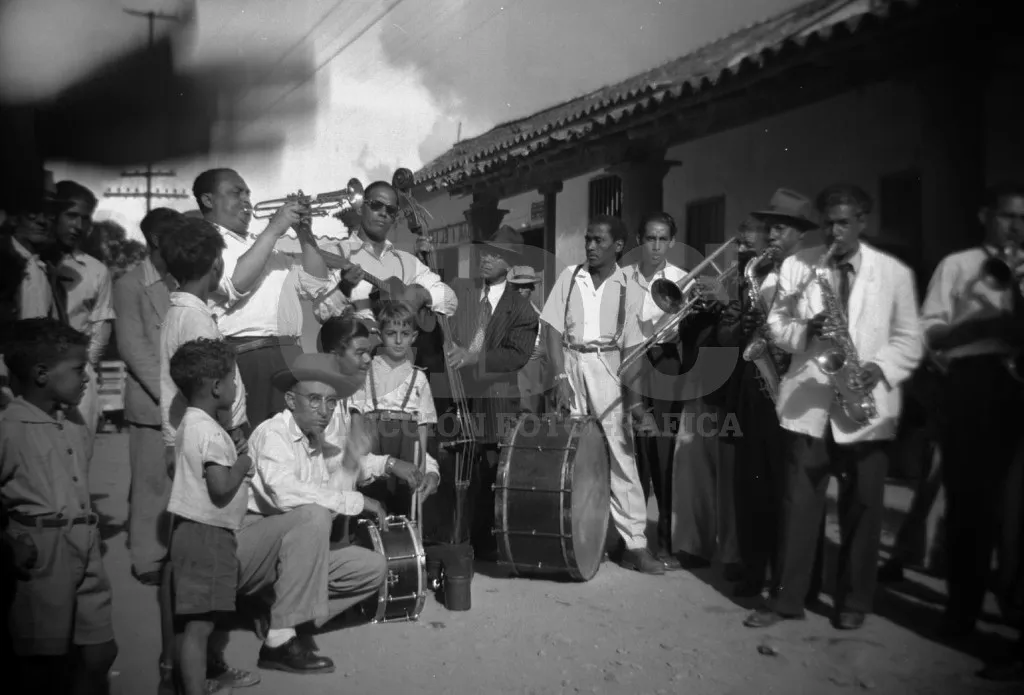
Benito Canónico’s Creole folk Orchestra. Municipality of El Hatillo. Photographer: Miguel Cardona. MIRANDA State. 1950 Source
With that said, I make it clear that these approaches that I bring here are my conclusions and the result of my personal experience with this musical form. These ideas I have been manifesting in different occasions and spaces, and little by little they have become the only information that is handled publicly. Of course, many of the approaches that I have been making have been inspired or stimulated by many other lovers of the culture and history of Caracas, where it is worth mentioning the chronicler of Caracas Carlos Eduardo Misle, better known as Caremis, and on the other hand the radioman and defender of the Venezuelan and Caracas cultural identity Cappy Donzella.

Background
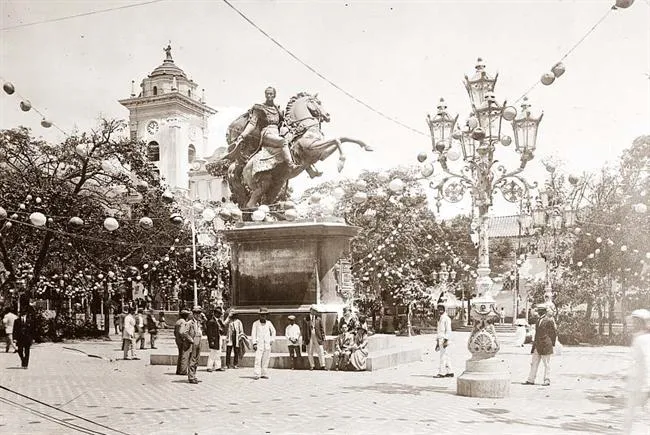
Bolívar Plaza of Caracas, 1910 Souce
At the end of the 19th century, Caracas, the capital of Venezuela, was still a rural village, with a majority of animal-drawn transport, agriculture areas, with village customs and traditions. An incipient cultural activity that was completed with the coming of zarzuelas and operettas, where the cuplé and the ballroom dances predominated.
Popularly, one of the great entertainments of the city were the concerts of the Caracas Marcial Band, on Sunday in the Bolívar Plaza . This band, which included in its repertoire, among many other rhythms, Venezuelan waltzes and joropos, was a fundamental element in the birth of a musical form in the city, since many of the musicians came from it and became part of a movement that, without them knowing it, gave form to a new musical language. One of the terms that is mistakenly used to define what we now call "cañonera music", comes from these bands, the word "retreta" (retreat).
The Wikipedia in Spanish, among other things, says of this word the following:
(...) In Latin America it is also used to describe a night or evening party in which a military band, or any other institution, walks the streets offering a musical performance or outdoor concert, usually in public squares, parks and walks. The "festive retreat" is usually diurnal or morning on Sundays or holidays and in many places these Sunday retreats are a very concurred and inescapable traditions.
Such is the case of the Retreats of the Bolívar Plaza, in charge of the Caracas Marcial Band: an inescapable party. But it is necessary to highlight three aspects of these:
- They are performed by military bands (or similar institutions)
- They play pre-prepared and rehearsed arrangements with a specific structure.
- They use instruments according to this type of group.

Petroleum
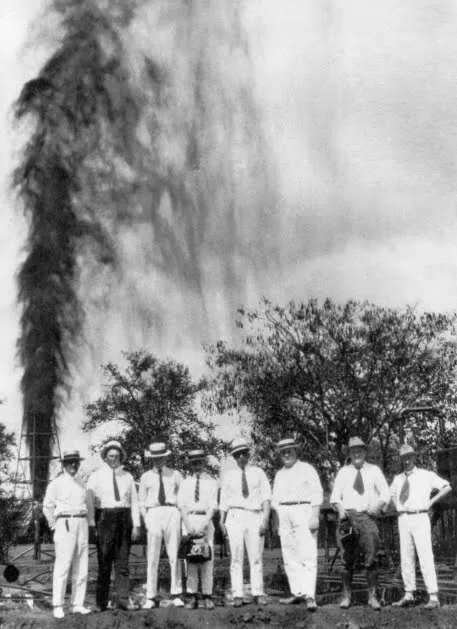
Oil well Los Barrosos-2, 1922 Source
Although the presence of oil in Venezuela was known from pre-Hispanic times, it is in 1875 that commercial exploitation begins. And in 1904, a presidential decree changed the course of Venezuelan history, ruling that "the President of the Republic obtained full power to administer and grant oil concessions without the consent of Congress." With this measure began the oil boom that opened the doors to the centralization and installation of large oil consortiums from various parts of the world.
With this change, attention and investment in agriculture began to be abandoned in order to dedicate themselves to the "new business", which resulted in a massive migration of peasants to the cities.
In the same way, the employees of the transnational companies began to arrive, who were not only from oil companies, but all of them that took advantage of the conditions of a country in the process of economic birth.

City culture
The former village and agricultural town began to become a city, by replacing chariots for cars, electric trams for buses, donkeys for trucks, a new trade arose, according to the new demands of the city. The topics to be discussed in the songs were not the same as before, it was no longer sung in milking or sowing, and the song was not about the animals that accompanied the man in his tasks or the fruits of the field. The rhythm of the city was different and its inhabitants were already others at that time.
The songs of the city begin to converge, along with the growing demand for international shows (we continue with zarzuela and operetta, but in larger amounts), all this alongside the music brought by the employees of the transnationals, mainly from the United States.
In the middle of that vortex, musicians from the city and other newcomers from different parts of the country are looking for their space and language. Among them there were some with musical knowledge, as in the cases of musicians coming from music schools, orchestras and military bands. Others brought the learning of the tradition, of the song inherited from generation to generation, of the music learned in the work and in the religious and pagan celebrations of all the country. But all of them now joined a city that was looking for a way to express itself.
There two interests converged, on the one hand the desire to continue playing or singing "their music" from their region, that of their traditions, and on the other hand to perform the trend music. But for that first point they could not always count on the corresponding native instruments and they had to adapt to the instruments that were available. And that was the same process with the trend repertoire, which was played with those same instruments, although they were part of the original instrumentation or not.
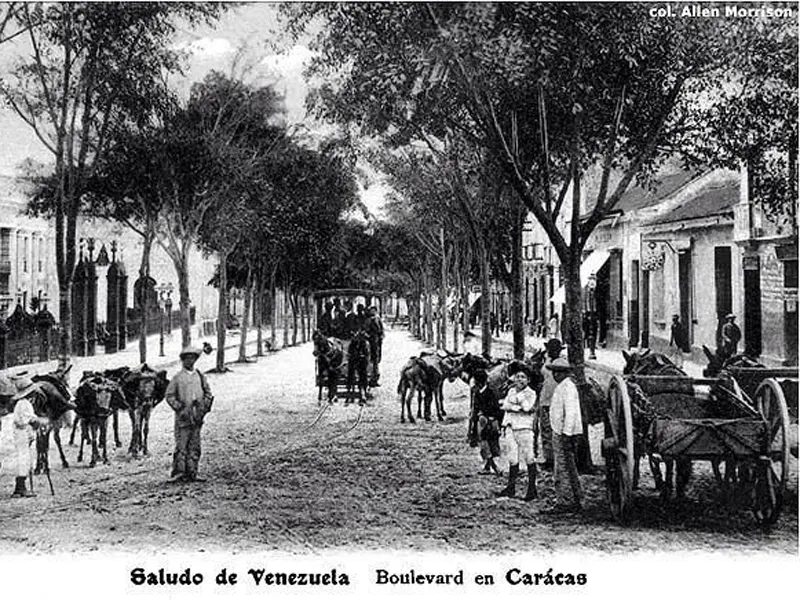 Source![image] | 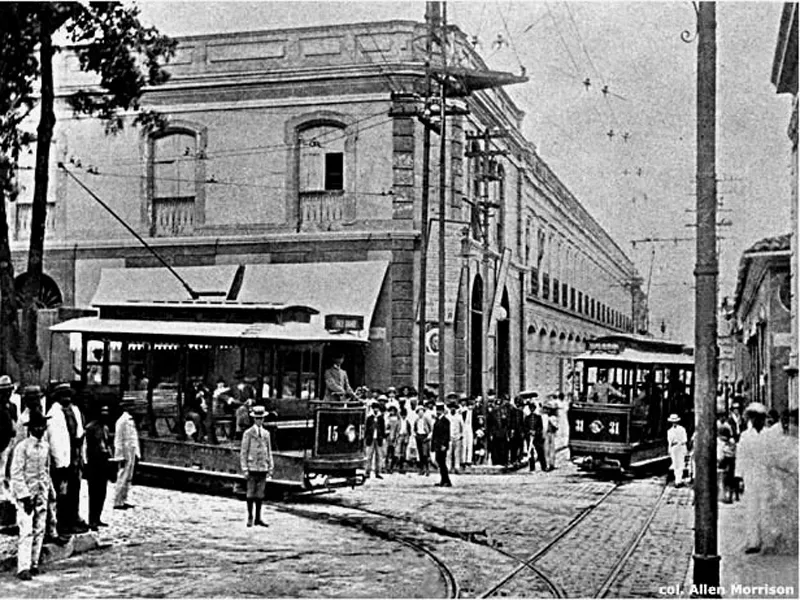 Source | 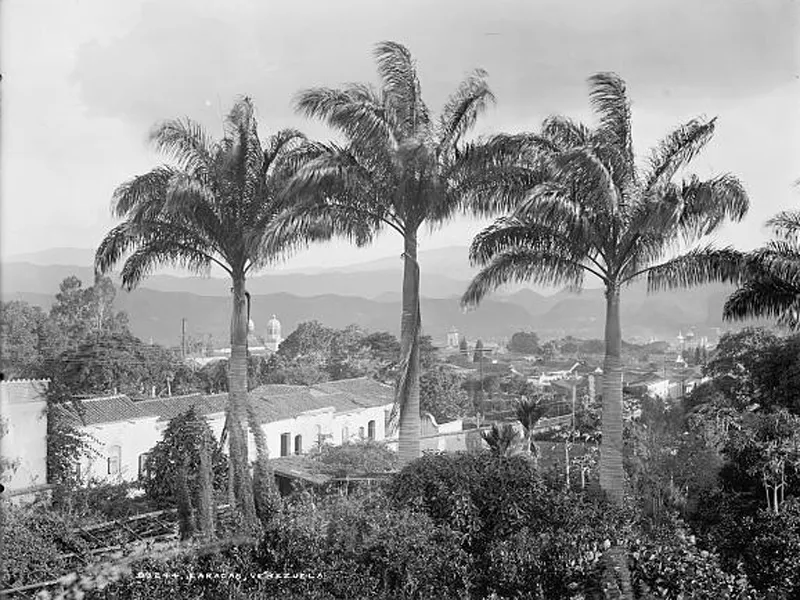 Source |
|---|

Two paths, one feeling
The inhabitants of Caracas began to define an inclination for a type of music and well-defined rhythms. In a previous article "The rhythms of a city", I talk more extensively about this aspect and link to other publications where I explain in detail each one of the rhythms that were heard in that nascent city. But to broadly speaking we can summarize that the rhythms that had an important influence were joropo, waltz, pasodoble, foxtrot and the polka, among others. But to play the trend repertoire, two types of groupings emerged.
The Serenaders
Caracas already had a wide serenade tradition, it means to bring a romantic repertoire to the windows of the young ladies of the city, music that was usually accompanied with guitar. But from this date a type of group was popularized that could include guitar, Venezuelan cuatro, mandolin, violin, harp, maracas and a metal instrument like a güiro, among other options. In this modality it was customary to sing, the lyrics ranged from the romantic, to the burlesque, from the every day to the funny criticism. These were groups that because of the instrumentation they used, they did not sound at a very high volume.
The Mabillers
The word "mabille" (of French origin) was used to designate "dating house" or brothels, in which you could also dance. In these types of places, as happens in nightclubs, a higher volume is usually used to encourage dancing. In these places worked many musicians who came from the military bands and in the style of the "Dixieland" groups, they included in the instrumentation the clarinet, sax, trumpet, trombone, drummer, etc. It is important to remember that the "ragtime" had a considerable importance in this city for that time, as it is clear from the story that I told in "What does it mean to kill a tiger ?". Therefore, the conformation of the Dixieland groups was well known by the musicians of Caracas.
It is also important to add that the social, economic and cultural conditions experienced by black people in the ghettos of the southern United States were not very different from those of the poorest sectors of the nascent neighborhoods of Caracas.
Musically, these groups used in the songs they played, on many occasions and especially in the merengue, the same characteristic scheme of jazz, where the melody begins, the harmonic cycle is repeated while the musicians improvise and conclude the theme with the melody. Most of the time without a written arrangement.

The "Come you" Orchestras
As the city grew and developed, the demand for musicians grew, it was then that a very particular modality was born. There were specific places, such as the corner of Pepe Alemán or Plaza Lopez, where musicians of all kinds gathered to wait for someone to come and hire their services, to carry a serenade or organize an impromptu party. Those interested arrived at these sites and a dialogue of this kind was held:
- What instrument do you play?
- Guitar!
- Well, come you. And you, the one with the bow tie, what do you play?
- Mandolin...
- Come you, too.
And from this type of conversation was instituted what was called the "Vente Tú Orchestras" (Come you Orchestras), groups formed according to the taste and "economic capacity" of the contracting party.
By that time a form of playing had already been created, a very particular instrumentation, as well as a very characteristic language and all this had been linked to all the activities that were celebrated in the city, such as the Mey Cross, Christmas and especially the carnival that was the celebration with which this music was most identified.

And the cannons?
The term "cañonero" means the one that fires the cannons, or what related to it.
The first relationship established with a cannon, is to refer to the musicians who played in these groups.
There was a custom deeply rooted in the city, that during Christmas, the groups that sang Carols or Christmas songs, went from house to house singing and asking for a tip in money, drink or food. To announce their arrival to each house, they blew a bamboo cannon at the doors of the house, after which they began to sing.
This "presentation" was taken by these groups from Caracas, that when there were no clients looking for them in the recruitment sites, they searched the newspaper for people that were on birthday, they went to their home, there they blew the cannon and entered singing, just like their Christmas predecessors, asking for money, drink or food.
It is said that the Venezuelan president Juan Vicente Gómez, was a lover of this music and that it was he who started calling them "cañoneros". in reference to the use of the cannon to introduce themselves.
However, this term was not well seen by professional musicians, who considered that "cañoneros" were not musicians but "drunks" who went out to play and sing in exchange for alcoholic beverages.
The Caracas chronicler Caremis, supported that belief by saying that the name "cañoneros" also had to do with the amount of cane liquor that they drank (cane in Spanish is "caña").
But these musicians were creating a unique style and sound that was imposed over time and that was later also copied by the large commercial orchestras, which began to include the same type of repertoire and many of the songs played by these groups.
The first time I went to interview Jacobo Espinoza, who was the singer and founder of Los Antaños del Stadium, a group founded in 1946, I asked him about the cañonero groups and he got upset in such a way that he almost kicked me out of his house, because "the cañoneros were drunks and they (his group) were professional musicians ...". Then I decided to change the question and asked about the "cañonera music", there was no major change in his attitude and he told me that it did not exist. They just played Venezuelan music and that's all, the only difference is that they played it with other instruments.

Conclusion
At a popular level, the manifestations are affirmed with daily practice. What those musicians were creating was not intended to generate a movement, but without realizing it, they were doing it. They created an urban form of the joropo, they gave more root to the waltzes, accentuating their Venezuelan nationality, they nationalized the Paso Doble, they created the Caracas merengue; all this together with an original sound of very specific instruments and a generally jocular language, which became the main dance music of that city and which was linked to all the activities of Caracas. Well, if we look for a name to identify that movement, it can not be other than "cañonera music".
Just as the term has had its detractors, there are also those who have used it with pride as a characteristic element of the culture of Caracas.
And I think an important step to guarantee their survival is to call it by its name, because the term "retreat", as we saw before, refers to a different type of grouping. Nor should we continue to call (which is very common) "music of yesteryear", because as I said in a previous article (The rhythms of a city):
(...)if we take it as "yesteryears music" it will never go from being "old music", destined to be "museum pieces", to continue aging and disappearing, a fact that is quite similar to current reality.
I completely agree to develop new forms of music and to seek new sounds, but I also think that it is important to contribute to maintaining the essence of this musical manifestation and to emphasize that it is a music for dancing.
I am convinced of the infinite possibilities of creation that offers the cañonera music and I think it is necessary that we keep alive, develop and take to new levels the first urban musical manifestation that took place in Venezuela.

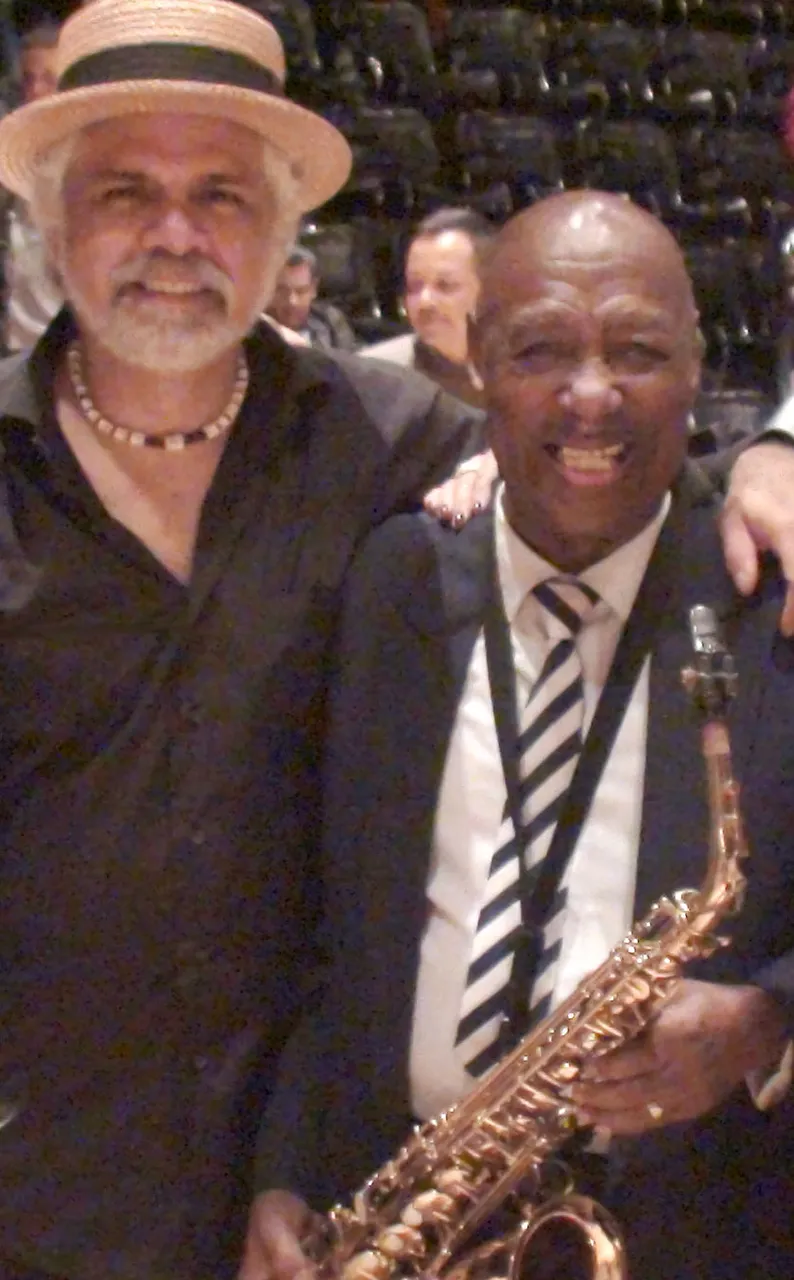
Aníbal Escobar and me (Photo of my own)
Curious fact
One of the characteristics in cañonera music is a very abundant use of accompaniment melodies in wind instruments, especially saxophone. The research I did in this regard yielded the following result.
Aníbal Escobar is considered the "Dean of the Cañonero Saxophone", for having played in "mabiles", being the founder of the Antaños del Stadium and having recorded this type of music in about 40 albums. He himself told me that since in those groups they never counted on the presence of the piano, since it was not a very used instrument in our music, he felt that the cuatro (instrument that was in charge of harmony) did not fulfill his function well and in order to "fill in" the accompaniment he played incessantly. This way of playing became habitual among wind musicians and became characteristic of the genre.

Music
Cocoita - Los Antaños del Stadium (Merengue)
La pelota de Carey - Grupo Los Criollos ≈1960 (Paso Doble)
El niño Macriado - Los Cañoneros 1983 (Joropo)
Mosaico N°1 - Néstor Zavarce y sus cañoneros 1970 (Merengue caraqueño)

Posts written by me related to this theme

@ylich
http://ylich.com
Recent posts / Artículos recientes
- Japan Salsa in Danceweekend (English - Español - Deutsch)
- Es de Caracas (Original song)
- Los ritmos de una ciudad
- The rhythms of a city
- Caricatura de El Ruso ¿hecha por Sansón Carrasco o Don Quijote?
